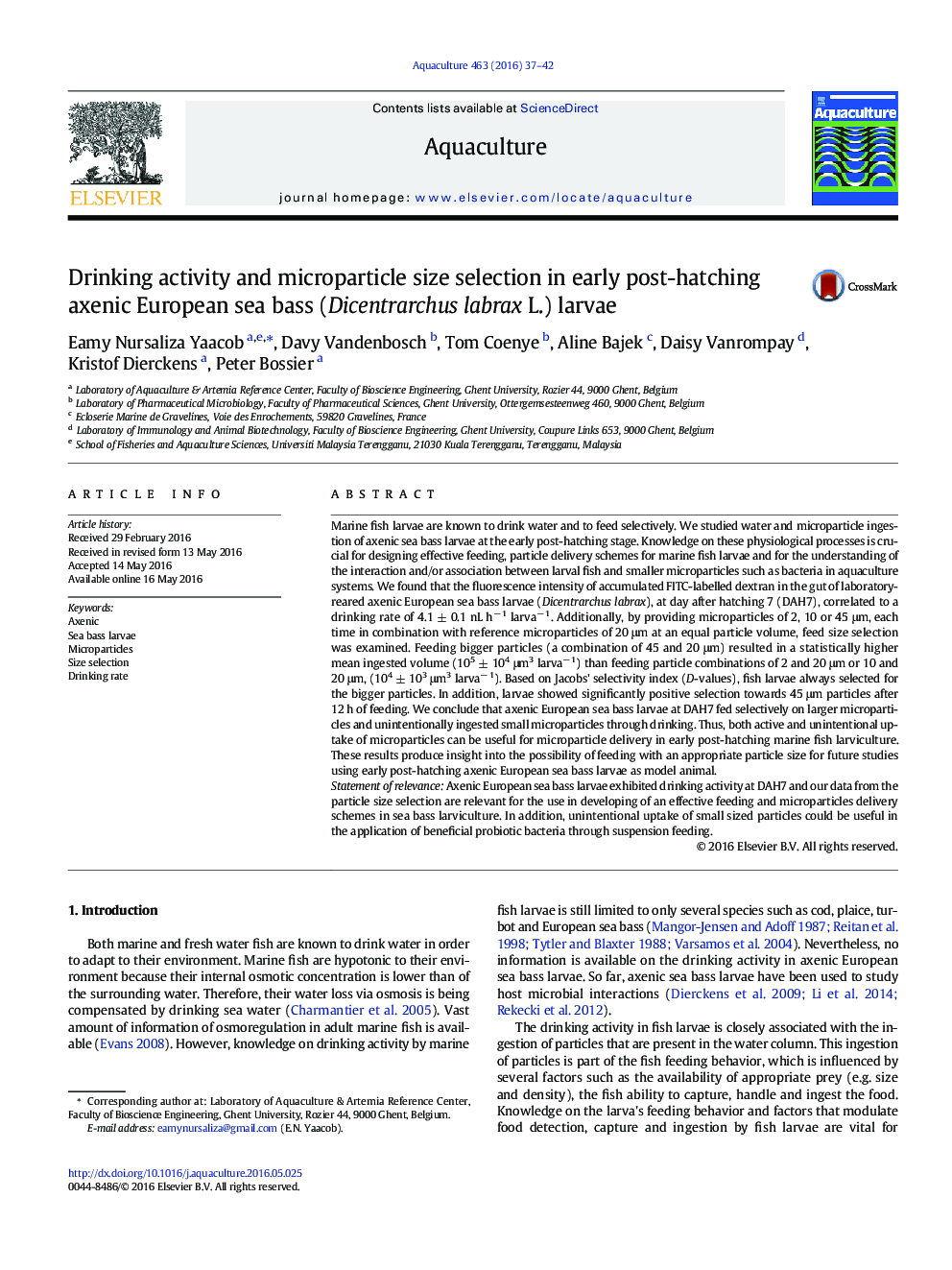| کد مقاله | کد نشریه | سال انتشار | مقاله انگلیسی | نسخه تمام متن |
|---|---|---|---|---|
| 2421334 | 1552824 | 2016 | 6 صفحه PDF | دانلود رایگان |

• Axenic European sea bass larvae drink sea water.
• Larger particles were always selected over smaller sized particles.
• Sea bass unintentionally ingested bacteria-sized particles through drinking.
• Our data are crucial in designing effective feeding and microparticle delivery schemes for sea bass larvae.
Marine fish larvae are known to drink water and to feed selectively. We studied water and microparticle ingestion of axenic sea bass larvae at the early post-hatching stage. Knowledge on these physiological processes is crucial for designing effective feeding, particle delivery schemes for marine fish larvae and for the understanding of the interaction and/or association between larval fish and smaller microparticles such as bacteria in aquaculture systems. We found that the fluorescence intensity of accumulated FITC-labelled dextran in the gut of laboratory-reared axenic European sea bass larvae (Dicentrarchus labrax), at day after hatching 7 (DAH7), correlated to a drinking rate of 4.1 ± 0.1 nL h− 1 larva− 1. Additionally, by providing microparticles of 2, 10 or 45 μm, each time in combination with reference microparticles of 20 μm at an equal particle volume, feed size selection was examined. Feeding bigger particles (a combination of 45 and 20 μm) resulted in a statistically higher mean ingested volume (105 ± 104 μm3 larva− 1) than feeding particle combinations of 2 and 20 μm or 10 and 20 μm, (104 ± 103 μm3 larva− 1). Based on Jacobs' selectivity index (D-values), fish larvae always selected for the bigger particles. In addition, larvae showed significantly positive selection towards 45 μm particles after 12 h of feeding. We conclude that axenic European sea bass larvae at DAH7 fed selectively on larger microparticles and unintentionally ingested small microparticles through drinking. Thus, both active and unintentional uptake of microparticles can be useful for microparticle delivery in early post-hatching marine fish larviculture. These results produce insight into the possibility of feeding with an appropriate particle size for future studies using early post-hatching axenic European sea bass larvae as model animal.Statement of relevanceAxenic European sea bass larvae exhibited drinking activity at DAH7 and our data from the particle size selection are relevant for the use in developing of an effective feeding and microparticles delivery schemes in sea bass larviculture. In addition, unintentional uptake of small sized particles could be useful in the application of beneficial probiotic bacteria through suspension feeding.
Journal: Aquaculture - Volume 463, 1 October 2016, Pages 37–42